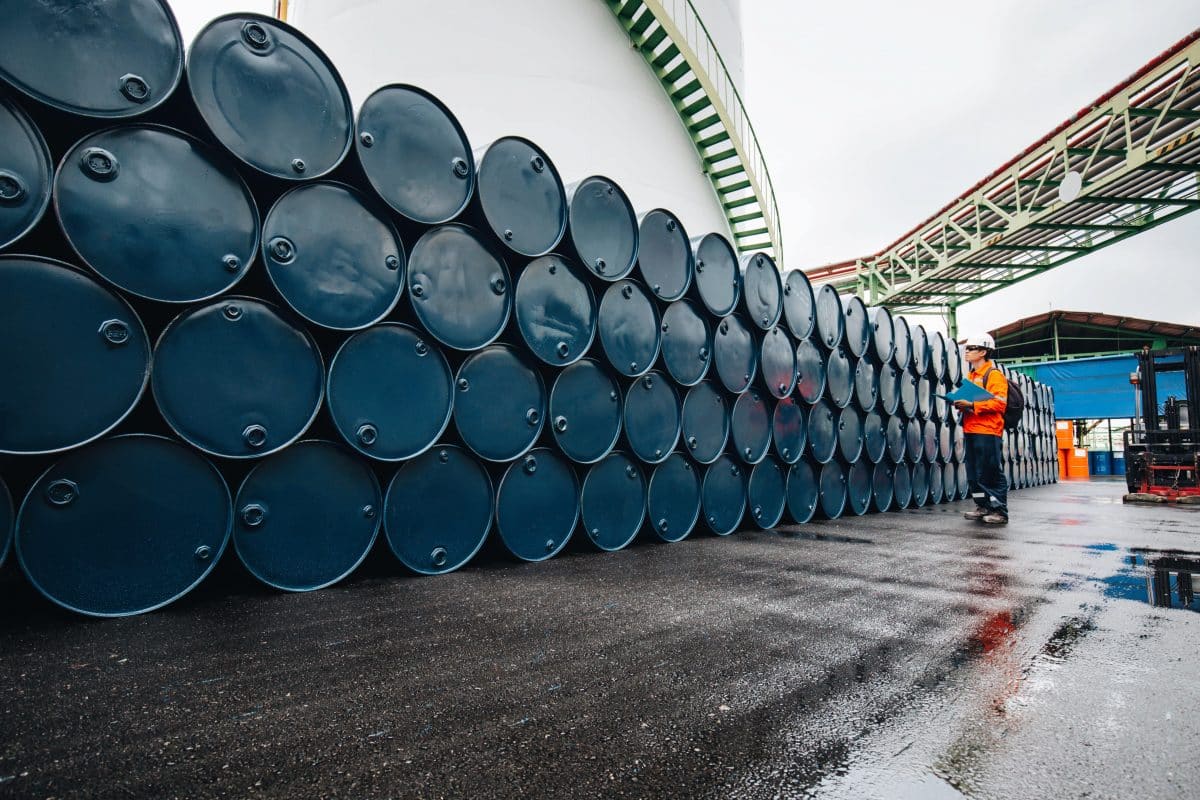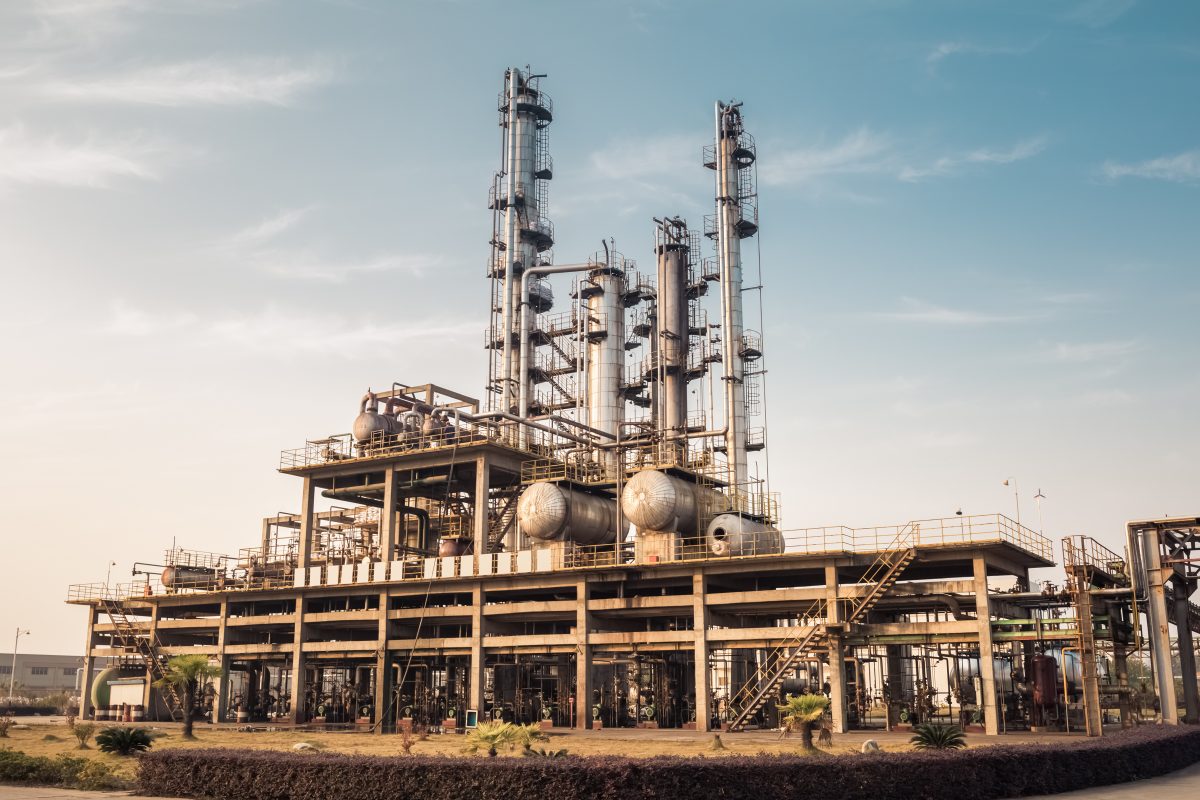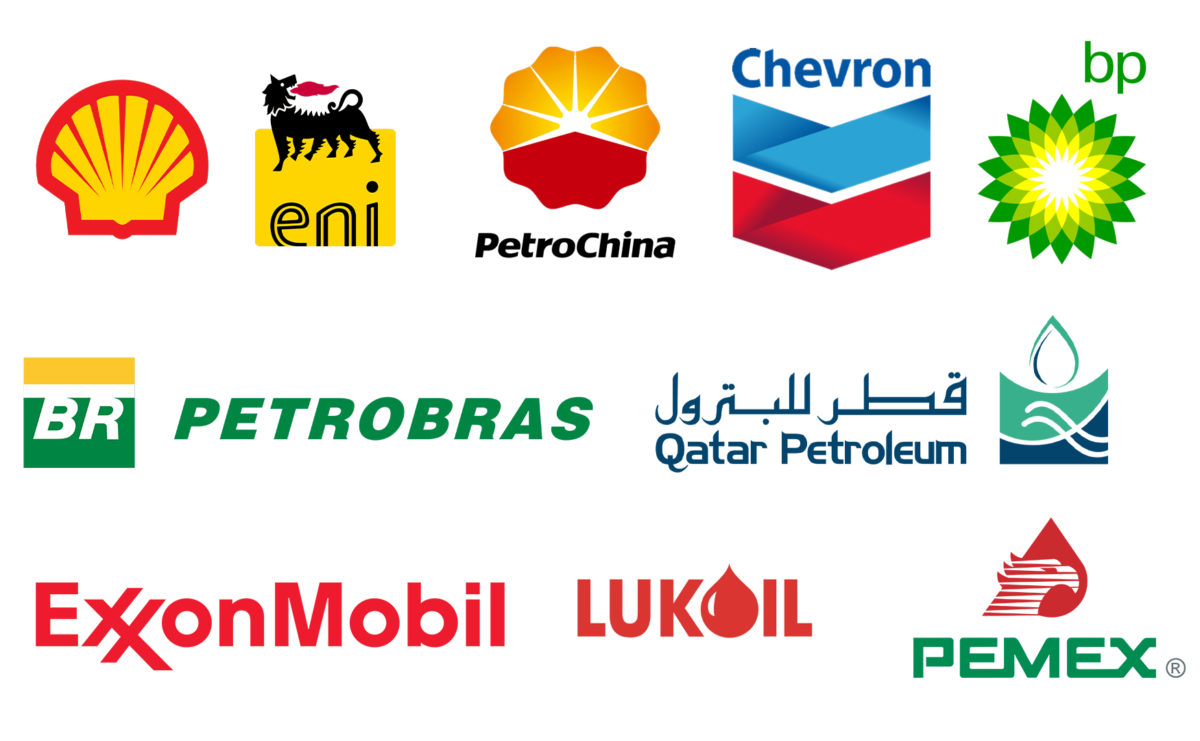In this piece, we will take a look at the 11 best oil refinery stocks to buy. If you want to skip our overview of the dynamics within the oil industry and recent developments, then take a look at the 5 Best Oil Refinery Stocks To Buy.
The modern day oil industry is responsible for fueling global transportation, industrial, and energy networks. Whether it’s electricity for large scale cloud computing data centers, cargo ships, aircraft, or power generation plants, humanity’s reliance on fossil fuels is responsible for both economic growth and pollution.
Within the oil sector, the same and different companies are present at key stages of the supply chain. After crude oil is extracted from the ground, it must be processed to bring it up to standard for consumption by machinery. Oil extracted from the ground is transformed into a variety of different end products, such as gasoline, kerosene, diesel, and heavy fuel oil. This transformation occurs in an oil refinery, which is one of several refineries that are responsible for converting cruder raw inputs into high grade products. Some examples of refineries include sugar and metal refineries.
Oil refineries are operated by large oil giants such as Chevron Corporation (NYSE:CVX) and Exxon Mobil Corporation (NYSE:XOM) and smaller companies with isolated business operations. Additionally, the heavy capital expenditure required to set up refineries often requires government involvement or financing of mega oil refining projects. For instance, Indian billionaire Mukesh Ambani and his petrochemical, retail, media, and telecommunications behemoth Reliance Industries Limited (NSE:RELIANCE.NS)’s oil refinery in the Indian state of Gujarat was partly built by a $500 million loan guarantee by the official credit export agency of the United States of America, the Export-Import Bank of the United States. Similarly, the Indian government has allocated $3.6 billion for oil refineries as part of its 23/24 budget.
These massive capital costs create high barriers to entry in the oil refinery business, leading to the being dominated by a few private sector firms or large state owned enterprises. For instance, consider the data that we gathered as part of the coverage of the Top 20 Largest Refineries In The World. While Reliance’s Gujarat oil refinery is the largest in the world and privately owned to boot, the largest oil refineries in Venezuela, the United Arab Emirates, Kuwait, Saudi Arabia, and China are owned by state enterprises. However, in South Korea, the U.S., and Taiwan, oil is refined by private companies which include some of the largest oil companies in the world.
Zooming out to take a broader look at the global oil refining industry, it is naturally one of the biggest in the world. According to data from Skyquest Technology, the oil refining industry was worth $1.49 trillion in 2021 and grew to $1.5 trillion by the end of 2022. From then until 2030, it can grow at a compounded annual growth rate (CAGR) of 5% to be worth an estimated $3.7 trillion by the end of the decade. Refineries sit at the very root of not only the oil industry but also the gas industry, since without them, the modern day supply chain for fossil fuels cannot function. Therefore, it’s unsurprising that the $1.5 trillion market value of the oil refinery industry is a sizeable fraction of the total value of the global oil industry. This was estimated to sit at $7.3 trillion by 2022 end. Broadly speaking, these two data points show that the oil refinery industry accounted for roughly 21% of the global oil industry in 2022. Some other sectors that account for the remaining share of the oil sector include extraction, midstream transportation and storage, marketing, and retail operations at the pump or the port.
Zooming back in, some of the biggest pure play oil and gas refining and marketing companies that trade on American stock exchanges are Marathon Petroleum Corporation (NYSE:MPC), Phillips 66 (NYSE:PSX), and Valero Energy Corporation (NYSE:VLO). Like the broader corporate world, it’s earnings season in the oil refinery sector, and these three giants have also reported their financial results. Starting from Marathon Petroleum Corporation, the firm’s profit for the third quarter of 2023 beat analyst estimates by sitting at $8.14 in adjusted net income per share. Similarly, Valero’s $7.49 adjusted net income per share also surpassed analyst estimates. Phillips 66 however suffered from low refining margins as its adjusted earnings per share of $4.63 was thirteen cents lower than the consensus forecast.
The broader oil market has been quite jittery these days because of fresh conflict in the Middle East, and while oil prices have remained relatively stable, the conflict between Israel and Palestine risks impacting oil supply from West Asia. On this front, Valero Energy Corporation (NYSE:VLO)’s chief executive officer Gary Simmons believes that the U.S. can relieve some of the risks to its oil imports if sanctions against Venezuela are relaxed. Venezuelan oil is sanctioned through actions against the state owned PDVSA, and Simmons shared in recent earnings call that an ease in sanctions can lead to 250,00 barrels of daily oil supply being diverted from the Far East to the U.S.
With this context, let’s take a look at the best oil refinery stocks to buy. The top three oil refinery stocks in this list are Marathon Petroleum Corporation, Valero Energy Corporation, and Phillips 66.
An aerial view of an oil and gas refinery, with its tall smoke stacks and complex piping.
Our Methodology
To compile our list of the best oil refinery stocks, we narrowed our focus from the broader oil industry to firms that limit themselves to oil refineries. For instance, while oil mega giants such as Saudi Arabian Oil Company (TADAWUL:2222.SR), Exxon Mobil Corporation, Exxon Mobil Corporation and Shell plc also operate refineries, they are excluded from the list since they are not pure play oil refinery companies.
A list of the 21 largest oil refining firms was initially compiled and then these were ranked by the number of hedge funds that had invested in them as of Q2 2023 end. Out of these, the top oil refining stocks are as follows.
11 Best Oil Refinery Stocks To Buy
Adams Resources & Energy, Inc. (NYSE:AE)
Number of Hedge Fund Investors in Q2 2023: 3
Adams Resources & Energy, Inc. (NYSE:AE) is a backend oil refinery company that provides raw oil to refiners. The firm is due to report its third quarter earnings in November, and analysts have set a 15 cent EPS estimate.
Three out of the 910 hedge funds tracked by Insider Monkey were the firm’s investors during Q3 2023. Adams Resources & Energy, Inc. (NYSE:AE)’s largest hedge fund investor is Jim Simons’ Renaissance Technologies as it owns $6.9 million worth of shares.
Adams Resources & Energy, Inc. (NYSE:AE) joins Valero Energy Corporation (NYSE:VLO), Marathon Petroleum Corporation (NYSE:MPC), and Phillips 66 (NYSE:PSX) in our list of the top oil refinery stocks to buy.
Aemetis, Inc. (NASDAQ:AMTX)
Number of Hedge Fund Investors in Q2 2023: 7
Aemetis, Inc. (NASDAQ:AMTX) is a biodiesel company that converts agricultural products into the fuel. The firm has a strong presence in India, with its subsidiary landing another multi million dollar deal with Indian OMCs in October 2023.
As of June 2023, seven hedge funds out of the 910 part of Insider Monkey’s research had held a stake in Aemetis, Inc. (NASDAQ:AMTX). Todd J. Kantor’s Encompass Capital Advisors is the company’s biggest investor out of these through its $13.2 million investment.
CVR Energy, Inc. (NYSE:CVI)
Number of Hedge Fund Investors in Q2 2023: 14
CVR Energy, Inc. (NYSE:CVI) is an Icahn Enterprises subsidiary and it refines oil into gasoline and other similar products. Its third quarter financials were quite a striking set of results as they saw the firm grow its net income from the year ago quarter’s $93 million to a whopping $353 million in Q3 2023.
14 out of the 910 hedge funds tracked by Insider Monkey had invested in the firm during the previous quarter. CVR Energy, Inc. (NYSE:CVI)’s largest hedge fund investor is Carl Icahn’s Icahn Capital LP due to its $2.1 billion investment.
Vertex Energy, Inc. (NASDAQ:VTNR)
Number of Hedge Fund Investors in Q2 2023: 17
Vertex Energy, Inc. (NASDAQ:VTNR) is an American company headquartered in Houston, Texas with motor oil and other refineries. Its operational outlook for the third quarter created quite a stir in October when Vertex Energy, Inc. (NASDAQ:VTNR) revealed that the throughput in its facilities for the third quarter would exceed the high end of its previous guidance by three thousand barrels per day.
During this year’s second quarter, 17 out of the 910 hedge funds part of Insider Monkey’s database had bought and owned Vertex Energy, Inc. (NASDAQ:VTNR)’s shares. The firm’s biggest shareholder in our database is Adam Usdan’s Trellus Management Company as it owns 2.1 million shares that are worth $13.2 million.
Delek US Holdings, Inc. (NYSE:DK)
Number of Hedge Fund Investors in Q2 2023: 19
Delek US Holdings, Inc. (NYSE:DK) is a semi diversified oil company with a sizeable refining division. The firm’s shares have done well on the market over the past six months as they are up by 27%. However, analysts seem to be unimpressed, as the shares are rated Hold on average.
After digging through 910 hedge funds for their June quarter of 2023 shareholdings, Insider Monkey discovered that 19 were the firm’s investors. Delek US Holdings, Inc. (NYSE:DK)’s largest investor out of these is Ken Fisher’s Fisher Asset Management as it owns $31 million worth of shares.
Par Pacific Holdings, Inc.
Number of Hedge Fund Investors in Q2 2023: 21
Par Pacific Holdings, Inc. (NYSE:PARR) is a small oil refining company with three facilities under it belt. The firm expanded its oil refining portfolio in June 2023 as it bought an oil refinery previously owned by Exxon Mobil in Montana.
For their second quarter of 2023 shareholdings, 21 out of the 910 hedge funds tracked by Insider Monkey had held a stake in Par Pacific Holdings, Inc. (NYSE:PARR). David Rosen’s Rubric Capital Management owns the biggest stake among these, which is worth $71 million and comes via 2.6 million shares.
Marathon Petroleum Corporation (NYSE:MPC), Par Pacific Holdings, Inc. (NYSE:PARR), Valero Energy Corporation (NYSE:VLO), and Phillips 66 (NYSE:PSX) are some top oil refinery stocks being bought by hedge funds.
Yahoo Finance, Ramish Cheema, November 5, 2023










